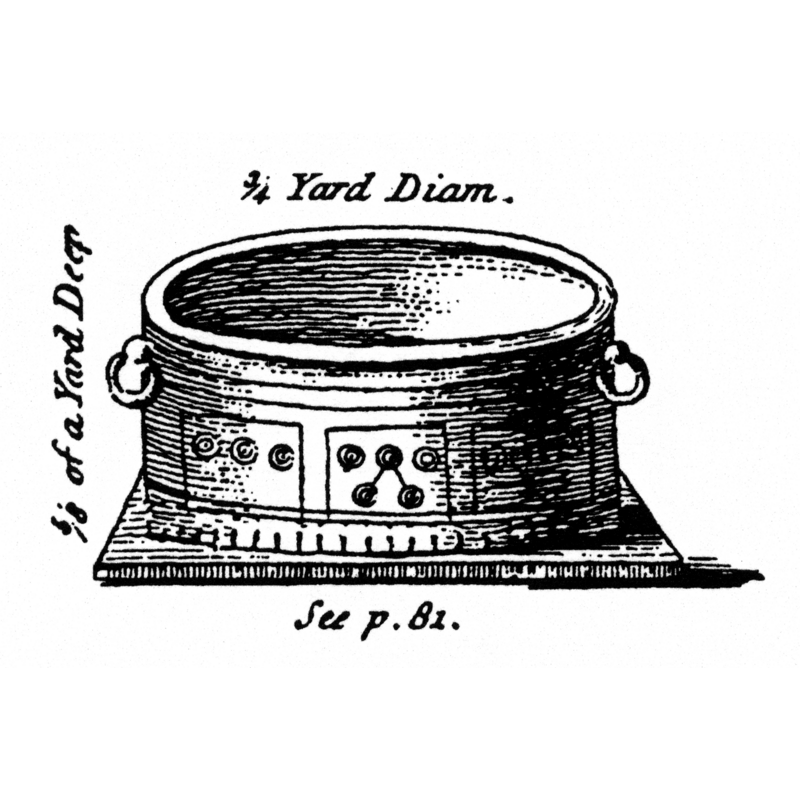Icklingham No. 3

Image copyright © [in the public domain]
PD
Results: 7 records
B01: symbol
B02: design element - motifs - circle or roundel
B03: design element - motifs - moulding - flat moulding - patterned
view of basin
view of basin
view of basin
INFORMATION
FontID: 07634ICK
Object Type: Baptismal Font1
Museum and Inventory Number: Cambridge Museum of Archaeology and Anthropology (?) -- cf. FontNotes
Church/Chapel: Early Christian church site
Country Name: England
Location: Suffolk, East Anglia
Directions to Site: Located in NW Suffolk
Font Location in Church: [the lead tank was discovered not far from the ancient church site]
Century and Period: 4th century (late), Early Christian
Font Notes:
Click to view
Early-Christian lead tank first (?) reported in Salmon (1728). Noted and illustrated in Camden's 1789 ed. of Britannia... with reference to Salmon (1728). An article by Mawer (1994) notes and illustrates the identity and present location of three lead tanks of the Early Christian period from Icklingham, Suffolk. This one, found in 1725, and very similar to the other two, can be identified by having only an inverted V-like symbol on the font side [the other two have different motifs on the front side]. According to Mawer (ibi.) this tank is not lost -as elsewhere claimed- but located in the Cambridge Museum of Archaeology and Anthropology. Reported in Petts (2003) as a baptism lead tank now disappeared, one of three found in this locality ca. 1726-1727; it is known that it was "ornamented", but not what the ornamentation was, and that the letter "A" [alpha] appeared on the side. These tanks were used for baptism in Roman Britain; Petts (ibid.) gives measurements for them between 97 cm and 46 cm of diameter [no specific measurements given for this one]. Petts (ibid.) dates all the Icklingham tanks and the baptistery to the second hald of the 4th century. Petts cites N. Salmon's A New Survey of England (London, 1730): 1, 161, as source [NB: two other lead tanks at this same locality are listed in this Index as Icklingham No. 1 and No. 2]
MEDIUM AND MEASUREMENTS
Material: metal, lead
Font Shape: round?
Basin Interior Shape: round?
Basin Exterior Shape: round?
Diameter (inside rim): 75-80 cm* [approx.] -- 67 cm**
Basin Total Height: 45 cm* [approx.] -- 31 cm**
Notes on Measurements: * [calculated from Gough's measurements in yards] -- ** [given in Mawer (1994) as maximum measurements]
INSCRIPTION
Inscription Language: Greek
Inscription Notes: one record mentions a letter "A" on the side [cf. FontNotes]
Inscription Location: on the side
Inscription Text: [inverted V-like symbol]
Inscription Source: Mawer (1994: 232-236); Petts (2003: 113)
REFERENCES
Camden, William, Britannia, or, a chorographical description of the flourishing kingdoms of England, Scotland, and Ireland, and the islands adjacent [...]. enlarged by the latest discoveries, by Richard Gough [...], London: printed by John Nichols, for T. Payne and Son, and G. G. J. and J. Robinson, 1789
Mawer, Frances, "The lost lead tank from Icklingham, Suffolk", 25, Britannia, 1994, pp. 232-236; p. 232-236
Petts, David, "Votive Deposits and Christian Practice in Late Roman Britain", The Cross Goes North: Processes of Conversion in Northern Europe, AD 300-1300, York: York Medieval Press, 2003
Plunkett, Steven, Suffolk in Anglo-Saxon times, Stroud, Gloucs.: Tempus, 2005
Salmon, Nathaniel, A new survey of England, wherein the defects of Camden are supplied [...], 1728-1729
![resembling an inverted V [cf. Font notes]](/static-50478a99ec6f36a15d6234548c59f63da52304e5/others/permission_not_available.jpg)